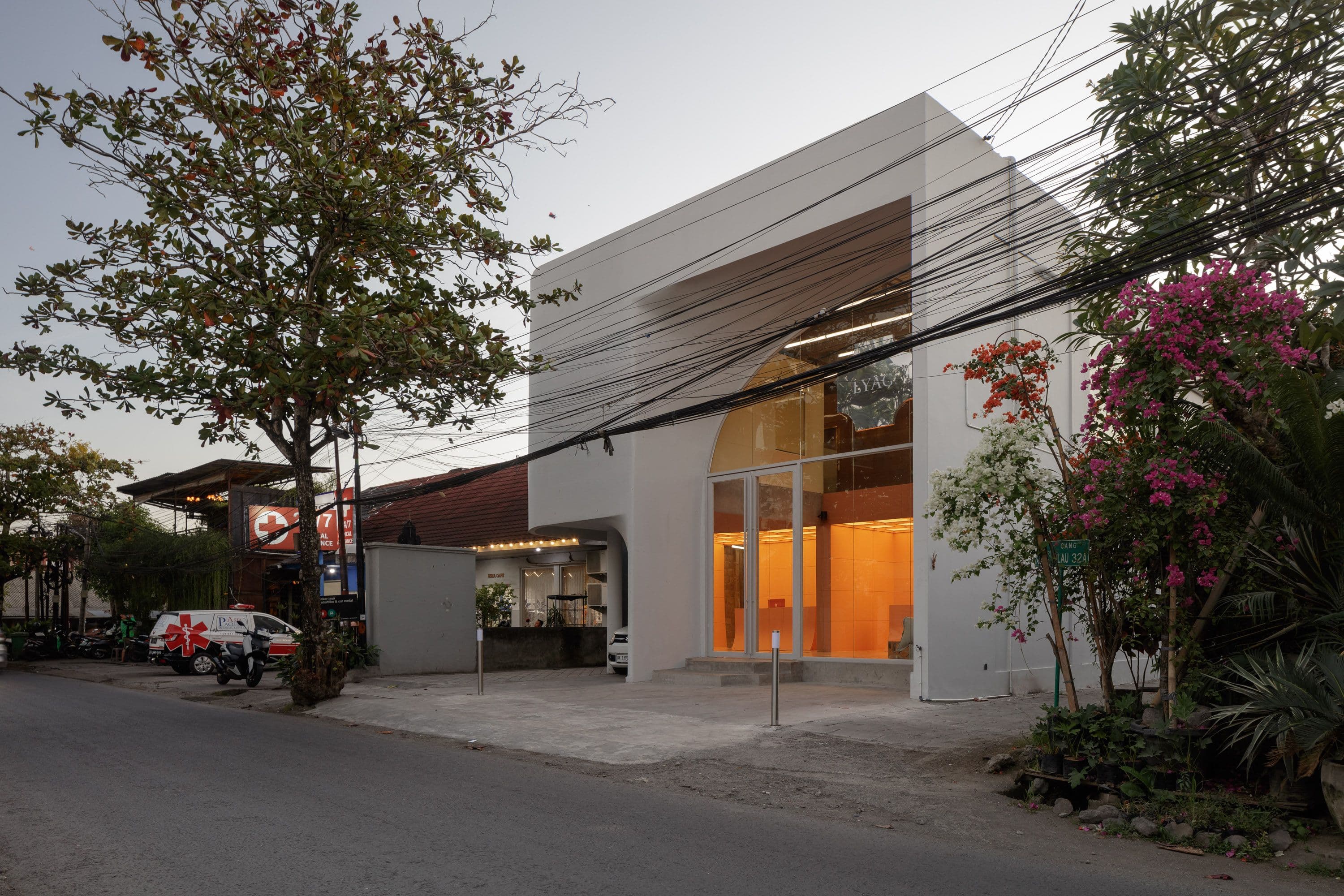LYAG. Conceptual massage studio
LYAG. A conceptual massage studio
interior of public spaces
Bali, Canggu
2024
COMPLETED
Stanislav Kozeen, Marcelo Rueda, Aleksandra ilchegulova, Sabina Shaiakhmetova, Oksana Ershova
LYAG
Vasiliy hurtin
LYAG. A conceptual massage studio set in an unfinished Balinese villa
The massage studio is a Balinese outpost of the wellness brand Lyag, which has been creating conceptual massage studios and fundamentally transforming the perception of the profession since 2015. At Lyag, massage therapists are not just service workers; they are skilled professionals for whom massage is a lifelong passion. They have a deep understanding of anatomy, master effective techniques, and continuously refine their skills.
The design of the studio was handed over to KOZEEN + RUEDA, an architecture firm tasked with transforming an unfinished two-story villa located in a Balinese village. While the structural work was complete, the interior remained a raw concrete shell. Instead of a complete overhaul, KOZEEN + RUEDA focused on adaptation, minimising their architectural interventions and working thoughtfully within the existing space. Their most significant alteration was changing the window layout, adding some and closing others, and painting the façade white. Despite these modifications, the building, designed by an unknown Balinese architect, retained its slightly odd, disproportionate silhouette. Entering through a façade with a crooked arch, visitors step into a completely different environment — an orange-hued lobby bathed in warm light. This juxtaposition of meticulously designed spaces with the raw, unfinished structure informs the core of Lyag’s spatial narrative.
The salon’s interior is organised like a Balinese village: the massage capsules are individual houses surrounded by the «jungle» of the unfinished concrete structure. The arrangement of the twelve capsules mimics the layout of a village, with narrow streets winding between them and leading to open «squares» — cosy communal areas populated with art objects created specifically for Lyag. The capsules connect to the outside through windows and doors, just like real homes do. They are slightly offset from one another, imitating the irregularity of an Asian street, where frontage lines are rarely perfectly straight.
The raw, brutal textures of the unfinished concrete contrast sharply with the smooth, glossy finish of the capsules. These capsules are made from medium-density fibreboard, coated with 17 layers of lacquer, and polished to a mirror-like shine. The rounded curvature of the doorways is reminiscent of skin folding during a massage. The colour palette of the capsules is inspired by human skin tones — ranging from porcelain to the darkest shades. Each capsule is painted in its own unique hue. While the exterior of the capsules gleams, the interior is matte, making it easier to maintain. Inside each capsule, there’s a massage table with enough space for the therapist to move around it, a small dressing area, a shower, and an open metal sink that can be used by both the guest and the therapist. The windows and doors are made from smart-glass that becomes opaque when the capsule is occupied.
LYAG. A conceptual massage studio set in an unfinished Balinese villa
The massage studio is a Balinese outpost of the wellness brand Lyag, which has been creating conceptual massage studios and fundamentally transforming the perception of the profession since 2015. At Lyag, massage therapists are not just service workers; they are skilled professionals for whom massage is a lifelong passion. They have a deep understanding of anatomy, master effective techniques, and continuously refine their skills.
The design of the studio was handed over to KOZEEN + RUEDA, an architecture firm tasked with transforming an unfinished two-story villa located in a Balinese village. While the structural work was complete, the interior remained a raw concrete shell. Instead of a complete overhaul, KOZEEN + RUEDA focused on adaptation, minimising their architectural interventions and working thoughtfully within the existing space. Their most significant alteration was changing the window layout, adding some and closing others, and painting the façade white. Despite these modifications, the building, designed by an unknown Balinese architect, retained its slightly odd, disproportionate silhouette. Entering through a façade with a crooked arch, visitors step into a completely different environment — an orange-hued lobby bathed in warm light. This juxtaposition of meticulously designed spaces with the raw, unfinished structure informs the core of Lyag’s spatial narrative.
The salon’s interior is organised like a Balinese village: the massage capsules are individual houses surrounded by the «jungle» of the unfinished concrete structure. The arrangement of the twelve capsules mimics the layout of a village, with narrow streets winding between them and leading to open «squares» — cosy communal areas populated with art objects created specifically for Lyag. The capsules connect to the outside through windows and doors, just like real homes do. They are slightly offset from one another, imitating the irregularity of an Asian street, where frontage lines are rarely perfectly straight.
The raw, brutal textures of the unfinished concrete contrast sharply with the smooth, glossy finish of the capsules. These capsules are made from medium-density fibreboard, coated with 17 layers of lacquer, and polished to a mirror-like shine. The rounded curvature of the doorways is reminiscent of skin folding during a massage. The colour palette of the capsules is inspired by human skin tones — ranging from porcelain to the darkest shades. Each capsule is painted in its own unique hue. While the exterior of the capsules gleams, the interior is matte, making it easier to maintain. Inside each capsule, there’s a massage table with enough space for the therapist to move around it, a small dressing area, a shower, and an open metal sink that can be used by both the guest and the therapist. The windows and doors are made from smart-glass that becomes opaque when the capsule is occupied.
